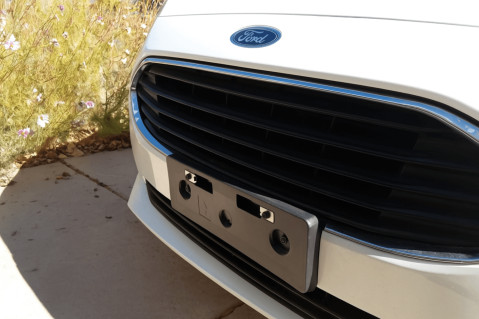Winter driving is a special principle of controlling a vehicle. To avoid any frightening consequences, it is necessary to prepare for driving in snowy or frosty conditions in advance. It is absolutely not worth underestimating such weather. Firstly, you should carry out the basic preparation of the car by clearing it of snow. With limited visibility, not only you but also other drivers are at risk. Secondly, try to choose routes only along main roads. It is on these sections that snowplows usually pass and sprinkle them with the necessary reagents. Allowing enough time for preparation and driving reduces stress and rash decisions that could lead to a push for help later.
Basics of Safe Winter Driving
Is it dangerous to drive in snow? If you are not prepared, then yes, of course. Control on icy roads requires high concentration and low speed. The accelerator pedal must be held down at all times. Be alert to avoid skidding. One of the best tips is to check the weather forecast. If a storm is guaranteed, it is better to postpone the trip. If you must, carry essentials like blankets and tools, and plan for extra time to reach your destination safely.
Preparing Your Car for Winter Conditions
Winter driving tips start with a well-prepared vehicle. Neglecting essential maintenance can turn even minor issues into major problems when temperatures drop.
Step-by-Step Car Preparation Checklist

- Count on thorough preparation rather than personal confidence. Make sure your car is ready to drive on icy roads. To do this, use the following recommendations:
- Check the condition of your tread. As is known, worn tires have less grip on the road. Therefore, if necessary, check your tire size and find the right replacement.
- Keep all tires properly inflated—low temperatures cause pressure to drop, impacting handling and grip.
- Make sure there is no ice or snow on the exhaust pipe. This will prevent carbon monoxide from entering the car.
- Top up with all necessary fluids, including antifreeze and windshield washer fluid.
- Test the battery, as it requires more power in cold weather to start the engine.
Why You Shouldn’t Neglect Winter Tires
What to Consider Before Driving in Winter
The main condition is thorough preparation. Remember all possible risks and take the necessary measures to prevent them. Build the route correctly and prepare the car so that it is able to perform the functions assigned to it.
Choosing the Right Route in Winter

During heavy snowfall, choosing the appropriate route is especially important. Avoid back roads or shortcuts that are less likely to be plowed. Stick to major highways or frequently traveled streets to reduce the chances of encountering snow-covered roads. Use tools like GPS apps to check for real-time closures or traffic delays. Additionally, you can decode a VIN number to learn more about your vehicle’s specific features that may assist in slippery-road driving.
Weather and Road Conditions
Monitoring weather forecasts and understanding road conditions can make all the difference in safety. Use this quick table to prepare:
| Condition | What to Watch For | Tips |
| Light Snow | Reduced visibility and traction | Drive slower and increase the stopping distance. |
| Shady spots | Ice patches hidden from sunlight | Brake gently to avoid sliding. |
| Driving in snow at night | Poor visibility and drifting snow | Use high beams carefully, focus on clear paths. |
| Severe Storms | Accumulation on wheels and roadways | Stop and wait if visibility is near zero. |
| Rain-Snow Mix | Slick surfaces and hydroplaning risk | Check your tires and drive cautiously. |
For vehicles with towing features, check your towing capacity to avoid overloading in bad weather.
Tools for Clearing Snow and Ice
Having the right tools on hand can save time and frustration during frosty mornings. Pay attention to the following instruments:
- An ice scraper (for all car windows).
- A snow brush (cleans only snow, does not damage paintwork).
- A small shovel (helps clear snow from wheels).
- Spray that helps prevent ice from forming on door locks.
- Sand or cat litter (allows for better tire grip).
Proper tools protect your vehicle and ensure a smoother and safer start to your journey.
How to Drive in Harsh Winter Conditions
Driving in winter and summer are certainly two different styles. Don't be afraid of snowy or slippery roads. Even beginners will have no difficulty driving in winter. The main thing is to follow the right rules. Understanding your vehicle's features and practicing patience are key.
Efficient Use of ABS
When driving along icy roads, realizing how to apply ABS (anti-lock braking system) properly is crucial. ABS prevents the wheels spin during sudden stops, helping drivers maintain control and regain traction. When the system activates, you may feel vibrations in the steering wheel—this is normal and indicates the brakes are working to avoid skidding. With front-wheel drive in snow (or fwd in snow), apply steady pressure to the brake pedal and never pump it, as this disrupts the ABS function. Always adjust your speed and leave extra space between vehicles to give ABS enough time to operate effectively. For new drivers, practicing on a glazed surface can help build confidence. You can also explore helpful safety tips to improve your driving skills.
Safe Braking Methods
Learning how to stop safely on slippery roads is crucial, especially if you can’t avoid driving. These methods can help you stay in control:
- Press the brakes smoothly; avoid pressing them abruptly.
- Shift down to a lower gear early on a steep downhill slope.
- Try to keep the rear and front tires level to avoid skidding.
- Tap the brakes lightly if you feel the wheels rotate under pressure.
Keeping your vehicle warm and mechanically sound, combined with cautious braking, ensures a safer drive in harsh conditions.
Unique Tips for Challenging Situations
Navigating treacherous roads during colder months requires advanced preparation and smart techniques. Knowing how to adapt your approach to different conditions can make all the difference in ensuring safe driving.
Hacks for Improving Tire Traction
Maintaining proper traction is vital for stability and control on snowy surfaces. Use these methods to improve traction on snow efficiently:
| Traction Hack | How It Helps | When to Use |
| Sand or Cat Litter | Provides temporary grip under spinning tires | Use when stuck in soft snow |
| Chains or Traction Mats | Increases surface grip for tires | Ideal for steep hills or unplowed roads |
| Reduce Tire Pressure | Expands tire contact area, improving traction | Only as a last resort for short distances |
| Apply Traction Spray | Coats tire surfaces for enhanced grip | Use before driving in extreme conditions |
| Check the vehicle history report | Confirms past maintenance for safety readiness | Important before purchasing a used car |
Winter Driving for Electric Vehicles
Driving electric vehicles in frosty months comes with unique challenges, particularly on snowy roads. To avoid slippage, use a higher gear. When driving downhill, on the contrary, use a lower gear (second). This will help maintain the stability of the automobile and not create an excessive load on the engine. Particular attention should also be paid to the distance. According to experts, the optimal distance from an electric car to another vehicle on a snowy road is at least six seconds. Another important condition for safe movement is a preliminary assessment of logistics. Build your route so that there are enough charging stations along your way.
Assembling the Ultimate Winter Emergency Kit

Snowy roads do not forgive drivers for mistakes. Knowing how to react correctly to this or that danger will allow you to eliminate any threats to life before help arrives.
An important condition is to assemble an emergency kit. Spare batteries, a flashlight, and other essentials will help avoid unpleasant surprises with loss of visibility. An additional set of warm clothes will protect you from hypothermia in an emergency. If you lose traction, a shovel and simple sand (an alternative is cat litter) can help you. Focus on the height of the snow cover. If the snow reaches six inches, it is a good reason to postpone your trip or choose another route. Take care of all resources - food, water, medicine. In case, for some reason, you get stuck, such supplies may save your life.
Myths and Facts About Winter Driving
Understanding the truth behind common misconceptions can improve safety during chilly-weather travel. Here are some key myths and facts:
- Myth: Driving at lower speed on all surfaces is always safer.
- Fact: While slowing down helps on slick roads, driving too slowly on clear stretches can cause your car to lose momentum, especially on inclines.
- Myth: Packing an emergency kit isn’t necessary for short trips.
- Fact: Even a short trip can turn into hours if stuck, making essentials like water and food critical.
- Myth: All-season tires are just as effective in snow.
- Fact: Grip-enhanced tires outperform them in freezing and snowy conditions.
Frequently Asked Questions
Using summer tires in mild chilly weather is risky. Summer tires are made with stiffer rubber that becomes less effective in lower temperatures, reducing grip significantly. Even without visible slush or ice, cooler pavement can still lead to traction issues.
Long trips in frosty weather are fraught with excessive fuel consumption. Another unpleasant consequence is engine damage. Modern vehicles warm up more effectively when driven gently instead of sitting idle.
Driving in winter is just a skill to develop. Only in this case will you be able to conquer your fear. Start by finding an empty lot to familiarize yourself with your car’s handling on icy surfaces. Practice controlled braking, smooth accelerations, and gentle turns to understand its behavior.
If available, use “Snow” or “Ice” modes, which adjust throttle sensitivity and minimize wheel slip. In cars without these features, or if you’re driving a 4-wheel drive, selecting a lower gear can enhance control.
Black ice is almost invisible, but you can recognize it with careful observation to avoid a potential collision. Pay particular attention to areas in the shade. These may be road spaces near overpasses or along forest belts. As a rule, the surface in these places is colder than on a busy road. If you notice shiny spots that are especially clearly visible early in the morning or after sunset, keep in mind that this may be black ice.







